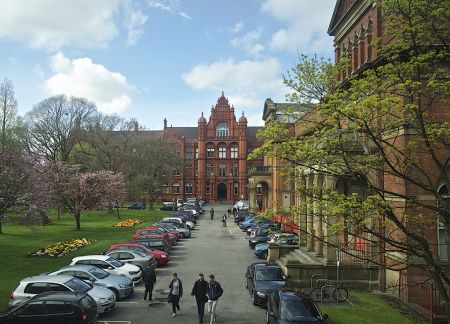
Infections that resist drugs "become weaker" - scientists say
Friday 6 July 2018
A NEW study published today (July 6, 2018) finds evidence that as bacteria adapt to the human body, they can be more susceptible to antibiotics and therefore easier to kill.
In a study of patients with cystic fibrosis, scientists at the Universities of Liverpool and Salford observed specific mutations of the genetic make-up of the infection Pseudomonas Aeruginosa when it was treated with antibiotics.
Such mutations, they say, are a contingency of the infected bacteria ‘sheltering’ from the antibiotic and result becoming less able to control their environment and damage healthy tissue.
Bacteria are increasingly becoming antibiotic-resistant making infections such as pneumonia, tuberculosis becoming harder to treat, leading to increased medical costs, prolonged hospital stays and higher mortality.
The researchers set out to establish how the bacteria adapted to the lung environment and whether the process impacted on bacterial resistance to antibiotic treatment.
Double-edged
Using models of long-term lung infection, the team identified mutations that appeared in the bacterial DNA over the course of infection and which led to changes in the ability of Pseudomonas to survive in the lungs. The mutations enabled the bacteria to attach to lung cells more effectively, and to resist defence molecules produced by the host immune system.
Importantly however, the same changes also made Pseudomonas more susceptible to antibiotics, raising hopes that even bacteria that are well adapted to the lung environment could be combated with conventional antibiotics.
Dr Daniel Neill, part of the team that led the study at the University of Liverpool, explains: “For a bacterium like Pseudomonas aeruginosa to survive in the lungs, it needs to adapt quickly. The human body contains an array of defences that will quickly kill bacteria if they cannot find ways to protect themselves.
"The mutations we identified in Pseudomonas in this study were important in allowing the bacteria to resist an anti-bacterial enzyme of the host immune system called lysozyme. What surprised us was that this adaptation came at a cost, in that bacteria carrying the mutation were very readily killed by antibiotics”.
Co-author Dr Ian Goodhead, lecturer in infectious diseases at the University of Salford said: “In the case of cystic fibrosis, it’s clear that bacteria have a choice: survive in the lungs, or defend themselves against antibiotics. By adapting to the former, they become more susceptible to the latter, so there is a cost to the bacteria of being resistant.”
New treatments
Further work is ongoing to understand these processes, as Dr Joanne Fothergill, University of Liverpool explains: “When bacteria form infections within the lungs, they do so in the form of a complex population of microbes. Not every Pseduomonas aeruginosa is the same, not even within a single patient. We now need to understand whether the antibiotic-susceptible mutants we identified are protected during infection by living as part of a community alongside more resistant strains."
Prof Aras Kadioglu, University of Liverpool, describes: “We found that these mutations appear early in infection and may originate in Pseudomonas aeruginosa living in the nose and sinuses. Children with cystic fibrosis are at a high risk of developing lung infections, but it may be possible to identify infection at an early stage by taking nose swabs to look for the presence of Pseudomonas. If the bacteria are there and are carrying the mutations we identified, it may be possible to treat the patient before lung infection becomes fully established."
The full study, entitled ‘Evolutionary trade-offs associated with loss of PmrB function in host-adapted Pseudomonas aeruginosa’, DOI 10.1038/s41467-018-04996-x is published in Nature Communications.
Find out more
Gareth Hollyman, Senior Press & PR Officer (Science)
0161 295 6895 g.b.hollyman@salford.ac.uk





